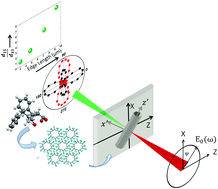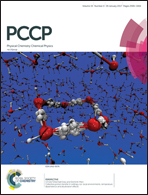Probing nonlinear optical coefficients in self-assembled peptide nanotubes†
Abstract
Self-assembled L,L-diphenylalanine (FF) peptide micro/nanotubes represent a class of biomimetic materials with a non-centrosymmetric crystal structure and strong piezoelectricity. The peptide nanotubes synthesized by a liquid phase method yield tube lengths in the hundreds of micron range, inner diameters in the few hundred nanometer range, and outer diameters in the 5–15 μm range. Second harmonic generation (SHG) polarimetry from individual self-assembled FF nanotubes is used to obtain the nonlinear (NLO) optical coefficients as a function of the tube diameter and thermal treatment. The ratio of the shear to the longitudinal component (d15/d33) of the NLO coefficient increases with the diameter of the tubes. One of the transverse components of the nonlinear coefficient is found to be negative, and its magnitude with respect to the longitudinal component increases with the tube diameter. Thermal treatment of individual FF tubes has a similar effect upon increasing the diameter of the tubes in SHG polarimetry. Concurrent Raman scattering measurements from individual FF tubes show a distinct change in the low frequency (100 cm−1) region with the diameter of the tubes reflecting subtle effects of water.



 Please wait while we load your content...
Please wait while we load your content...